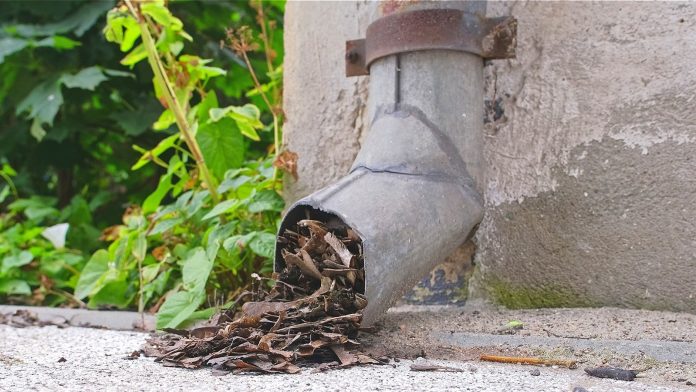Ready with your plumbing snake? Working with one can be messy so, before you start, ensure you have the necessary safety gear, like gloves and eye protection. Aside from the plumbing snake, you’ll also need a ladder, and a bucket for collecting debris from your clogged rainspout(s).
Examine the gutters and rainspouts for visible debris or signs of overflowing to identify the clogs. When using a plumbing snake, you can either start at the top and push the snake down into the downspout or begin from the bottom and push it up. The choice is entirely up to you and the location of the clog. Next, carefully feed the plumbing snake into the rainspout (aka downspout), using gentle but consistent pressure. The snake’s rotating coil will help break up and dislodge the debris that’s blocking the drainpipe. Turn the crank to move the snake back and forth as needed to clear the obstruction.
Unclogging a rainspout may take time, so be patient and avoid forcing the snake in, as this could damage the drainpipe. As you work, pull the snake out slowly, allowing it to bring the debris with it. Finally, collect the debris in the bucket. With the clogs removed, your rainspouts should once again function efficiently. Regularly cleaning them, especially during the fall when leaves are most likely to accumulate, will help prevent future issues and protect your home from water damage.
www.housedigest.com
https://www.housedigest.com/1409053/clean-gutters-plumbers-snake-rain-spout/














